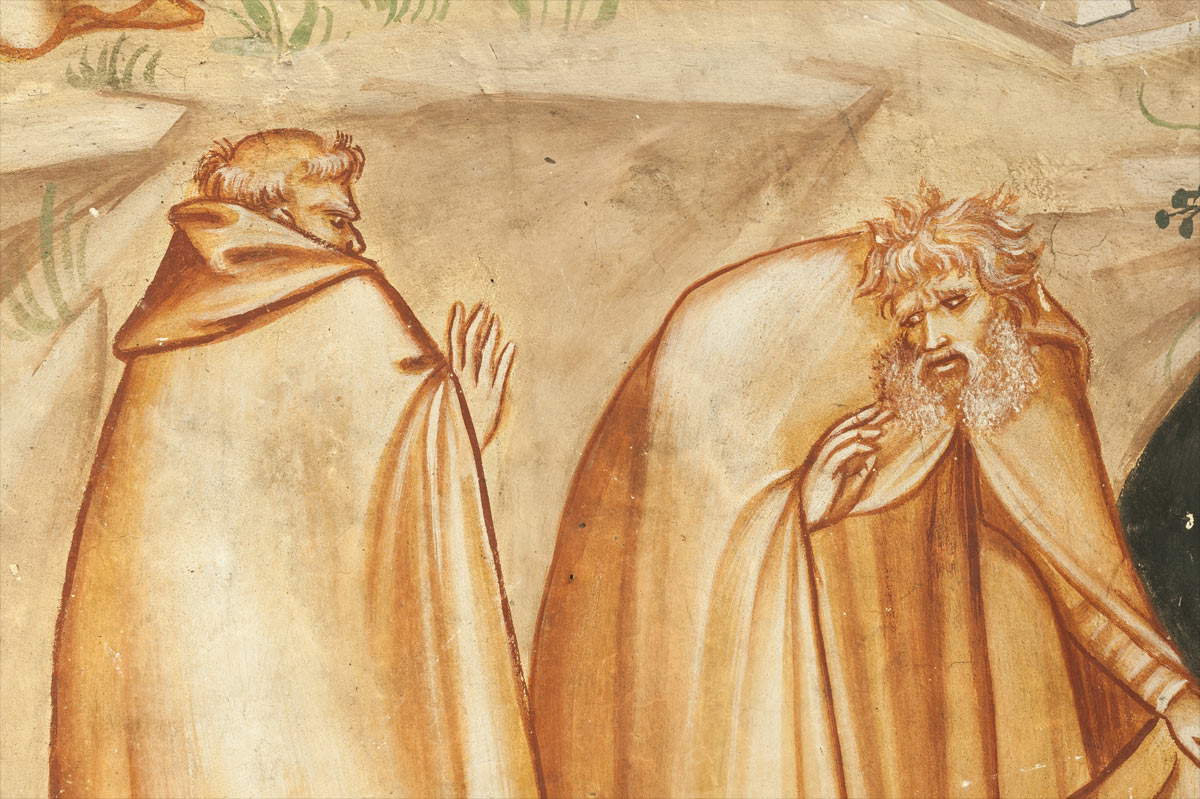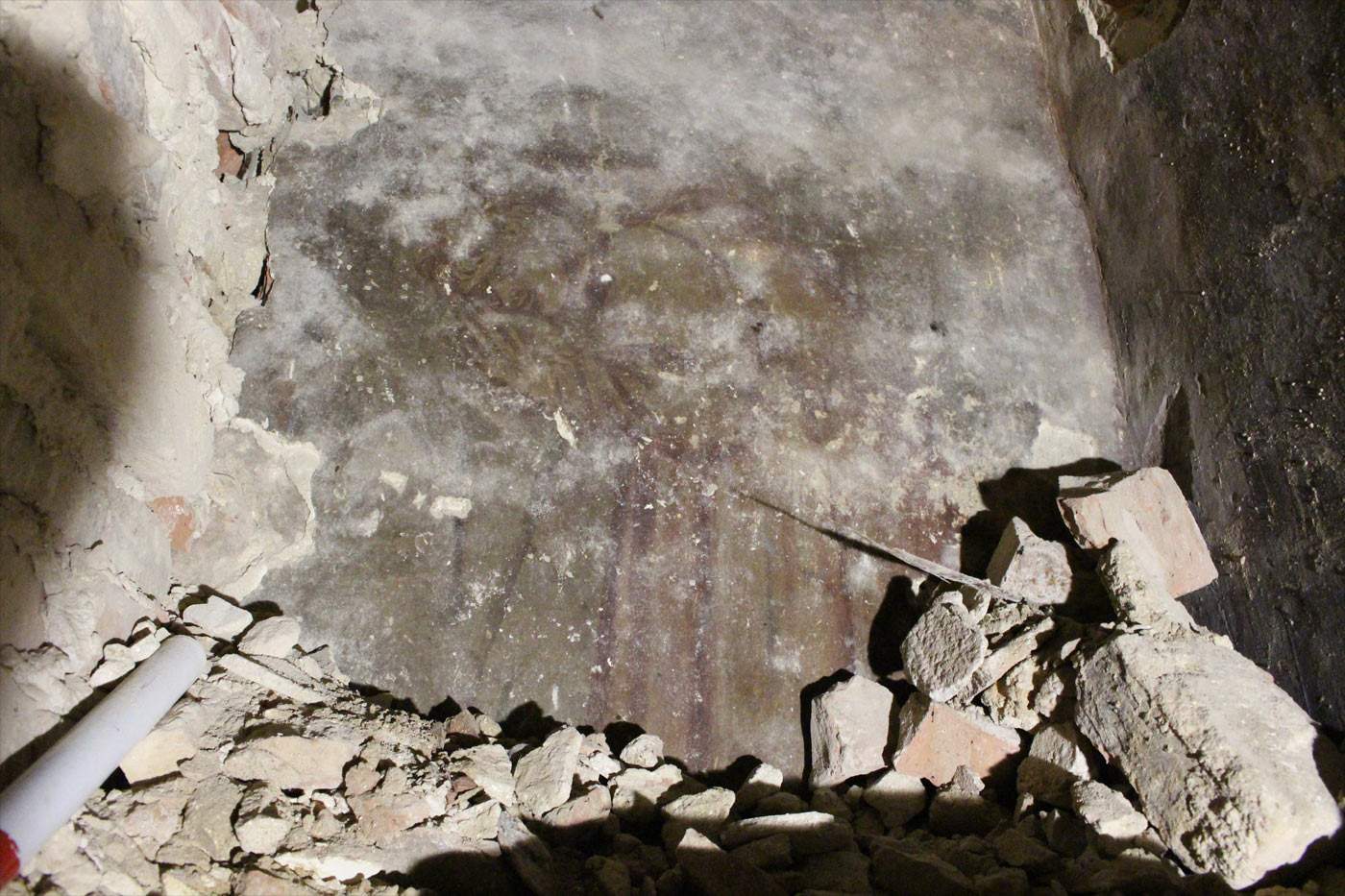Siena, important finds at Santa Maria della Scala: frescoes and a 14th-century staircase
In Siena, the Society of Executors of Pious Dispositions, heir to the company of the Disciplinati di Santa Maria under the vaults of the Spedale, one of the oldest Sienese sodalities whose origins presumably date back to the late 13th century, announces the discovery of some important frescoes in the complex of Santa Maria della Scala, where the society has its historical headquarters, which can be reached by the 18th-19th century staircase that leads from the Corticella to the floor below by crossing the frescoed room that overlooks the ancient medieval internal street of Sant’Ansano.
As early as 1999, during renovation work on the museum complex, above the vault and on the walls of the steep eighteenth-nineteenth-century staircase, the almost monochrome fresco cycle of scenes from the hermitic life of the early Church fathers, the Tebaide, so-called because it was set in the desert of Thebes in Egypt, was discovered. Recent studies conducted by Alessandro Bagnoli and Maria Corsi date the cycle to before the great plague of 1348 and refer it to a painter influenced by Ambrogio and Pietro Lorenzetti, who parallels the work of Niccolò di ser Sozzo and the young Lippo Vanni. Given the considerable importance of these frescoes, the Society of Executors of Pious Dispositions has promoted and financed some investigations aimed at identifying the possible continuation of the Thebaid on the walls and to better define the architectural conformation of the ancient room that houses it.


The archaeological investigations were carried out under the high supervision of the Superintendence of Siena, Grosseto and Arezzo and the collaboration of the museum staff of Santa Maria della Scala, removing debris placed beyond the parapet of the staircase. The results, the Society reports, are of absolute significance. They uncovered the remains of a 14th-century staircase, coeval with the paintings, consisting of 13 steps, leaning against the east wall, and which at the top, in the northern sector, seems to continue in a westerly direction above the barrel vault of the present staircase, which is not explored at the moment, while on the walls two frescoed figures emerged, a monochrome praying monk and a figure of a saint, a small vault painted with a starry sky, and a faux-marble flounce, all belonging to the 14th-century pictorial intervention. At the end of the ancient staircase, on the floor of the headquarters of the Pious Dispositions, a brick landing also emerged on which is set an opening with an arch, decorated in the intrados with a figurative scene, which is still barely legible.
“These findings,” the Society declares, “give new impetus to further investigations and studies, preparatory to the restoration and enhancement of the extraordinary fresco cycle, a project that has been chosen as the main sponsor by mister Robert Cope, president of the Vaseppi Foundation, a great admirer of medieval Sienese art, who recently financed the restoration of Taddeo di Bartolo’s triptych of the Assumption in Montepulciano. The Society of Executors of Pious Dispositions, even today, as moreover since its origins, is pleased to contribute to the enrichment of the cultural heritage of the city of Siena.”
 |
| Siena, important finds at Santa Maria della Scala: frescoes and a 14th-century staircase |
Warning: the translation into English of the original Italian article was created using automatic tools. We undertake to review all articles, but we do not guarantee the total absence of inaccuracies in the translation due to the program. You can find the original by clicking on the ITA button. If you find any mistake,please contact us.





























